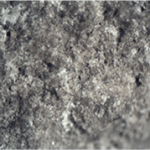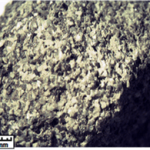Visual Rock Characterization

INSTRUCTOR: Robert Merrill, PhD
DISCIPLINE: Geoscience, Formation Evaluation
COURSE LENGTH (DAYS): 5 Days
CEUS: 4.0
AVAILABILITY: Public & In-House
ATTEND AN UPCOMING CLASS:
Check back in periodically for updated course dates!
WHO SHOULD ATTEND: Geologists in both exploration and production who desire to enhance their ability to get more information from existing sample datasets and describe lithology from cuttings and cores for stratigraphic interpretation, facies mapping and reservoir characterization.
COURSE DESCRIPTION:
Information extracted from visual analysis of rock samples focuses us on the fundamentals of oil and gas exploration and development. This data can be found in the millions of boxes of existing cores and cuttings as well as during drilling at the wellsite. A significant amount of information can be extracted from cuttings, even those chewed up by a PDC bit. Cuttings and core description brings out details of reservoir pore systems, depositional environments, facies description, supplements and enhances modern wireline logs, and aids in recognizing by-passed pays. Quantitative description has progressed from thin sections to enhanced imaging techniques. There is still a role for cuttings and core description in this changing technological environment. Grain size, framework, fossils, color and texture distinguish subtle facies changes, subsidence patterns, and regional structures.
Rock description provides a tool to calibrate wireline logs to the rocks for quality assurance, better interpretation and even an early calibration to geophysical properties. The character of the matrix and the accessory minerals in the rock affect wireline logs, e.g. pyrite or sylvite, decreasing the uncertainty in wireline log calculations. Shows from samples and cores can be seen to exist in the rock, highlighting potential pay zones.
Diagenetic changes within the rock are visible in cores as well as cuttings; these changes both create and destroy porosity. The nature and amount of porosity can be qualitatively described, including, not only pore types, but also pore distribution, and the type and amount of cement. The recognition of multiple pore types has resulted in identifying overlooked pay zones, as the finest pores have higher adsorbed water percentage and larger pores will flow hydrocarbons. When dealing with unconventional reservoirs, mineralogy and hardness correlate to brittleness, and fractures and microfractures are clearly evident.
Practical applications of concepts and methods for characterizing rocks are demonstrated through exercises to reinforce key concepts. Participants are expected to independently view and describe a sequence of samples for the final exercise.
First developed in 2006, Dr. Merrill has given this course as open classes and as internal classes for major oil companies and various national oil companies.

Diagenesis: Using acid to etch a dolomitic limestone with dilute HCL, dolomite rhombs etch out and it is possible to visually estimate the percent dolomite in the limestone.

Porosity: Carbonates often have multiple types of porosity, this is a microcrystalline dolomite that has about 20% pinpoint (voids < 62µ) and vuggy (voids >62µ) porosity.

This sandstone cutting has abundant chert fragments which is an indication of provenance. A test with cold HCL indicates that it contains some dolomite cement, but more importantly about 10% of the pores are cemented with silica and another 10% of the pores are filled with secondary kaolinite. With at least 20% of the pore space filled, open porosity could be no more than 13%. The presence of kaolinite suggests that there was a granitic terrain source as well because of the propensity of feldspar to alter to kaolinite. This particular sample displayed good fluorescence under ultraviolet light and had a light cut indicating the presence of oil.

This sample of cuttings is from a sandstone that is siliceous and slightly dolomitic. Euhedral quartz crusts on quartz grains indicate the presence of silica cement in the pores. In addition to the quartz grains, there are chert fragments, kaolinitized feldspar fragments as well as unidentified lithic fragments. A trace of glauconite indicates the sandstone was deposited in a marine environment. The generally large size of the shale cuttings suggests these gray to dark gray fragments are shale cavings dislodged from uphole.
LEARNING OUTCOMES:
- Understand the principles of describing cuttings and cores, including important rock properties, with the binocular microscope.
- Understand the criteria to differentiate cavings in a cuttings sample.
- Ability to describe clastic rocks including shale, siltstone and sandstone, their components, porosity and other physical characteristics.
- Ability to describe and differentiate limestone, dolomite and evaporites, their physical characteristics and diagenesis.
- Independently describe a sequence of samples and generate a log from cuttings.
COURSE CONTENT:
Course Info
- Principles of cuttings and core examination with the binocular microscope, including sample properties and wireline log response
- Sandstone, sandstone components, porosity and other physical characteristics
- Siltstone and shale
- Carbonate classification, limestone and dolomite characteristics and diagenesis
- Fossils
- Evaporates and other miscellaneous rock types
- Logging exercises
Tuition for this course includes:
- Microscopes and light sources for use during the class
- Manual and CD-Rom with examples
- Basic Tool Kit includes tweezers, a metal probe, glass rod, polypropylene beaker, acid bottle, watch glasses, sample trays, water bottle, artists brush and grain-size scale in a storage box
